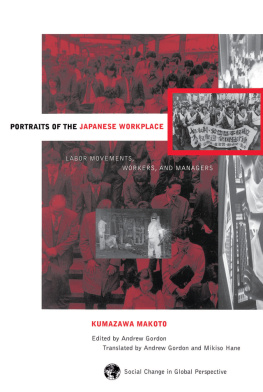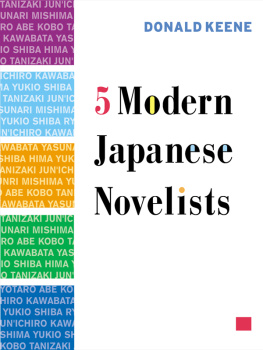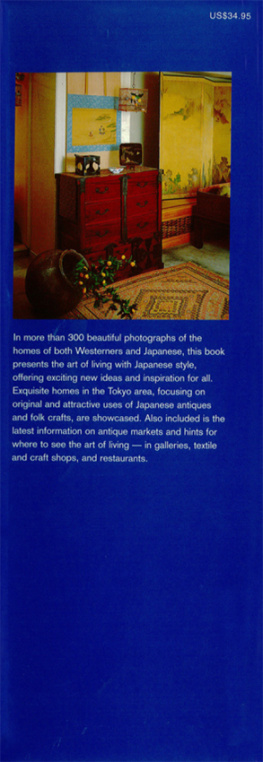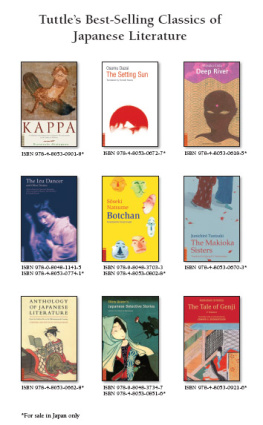Foreword
The idea for this work came after much of it was written. From journal entries, diary jottings, failed stories and novels, I had accumulated a number of pages that appeared to be interesting, but I did not know how to use them. There seemed to be no form that would hold together pieces this various.
Then, as I was reading Marguerite Yourcenar's book on Mishima, I came across this passage: "A chain is formed of people different from one another, who are united, incomprehensibly, because we have chosen them." And I knew what this collection of mine was about and what form it should take.
I had for some time wanted to write of my years in Japan, more than half my life, but I did not want to write a memoir; those I had read seemed so explanatory, so self-serving. But here, by assembling a group of stray people who had lived on in memory, I saw a way of recording some of my own experiences without "exploiting" them. The deeper experiences might be excluded, but what perhaps counts mostthe dappled surface of life itselfwould be visible. And I would be there among the crowd.
I had no model for this book, though I much admired the collected character studies of the nineteenth-century Japanese writer Doppo Kunikida and his talent for what he called "sketching from life." But I did have a number of anti-models. These were those books on Japan which are written entirely in generalities. It is all them-and-us, and "the Japanese" who emerge from these works bear little resemblance to any Japanese I have ever known. I had become impatient reading about such all-explaining qualities as giri and ninjo, hone and tatemae, ura and omote, and all the rest of these abstractions. Such hypothetical opposites do exist in Japan, but they exist everywhere else as well. The terms describe theories, not people. In this collection, I wanted to draw particular likenesses undisturbed by theoretical considerations.
My methods vary. There are views from the outside, views from the inside; there are monologues and dialogues; interviews and impressionistic descriptions. If the techniques of fiction are used, they are employed only so that the likeness may the more clearly emerge. I am writing about people, not "a people"; a series of portraits of certain Japanese I have known personally, each of whom, being human, is unique.
Donald Richie
Sada Ab
After the war, released from prison, she got herself a job in Inari-cho, in downtown Tokyo: at the Hoshi-Kiku-Suithe Star-Chrysanthemum-Watera pub.
There, every night, workers of the neighborhoodfor it was a taishusakaba, a workingman's pubwould gather to drink sak and shochu and nibble grilled squid and pickled radish. And every night around ten, Sada Ab would make her entrance.
It was grand. She descended the staircaseitself a large affair which ended right in the middle of the customers. Always in bright kimono, one redolent of the time of her crime, early Showa, 1936, Sada Ab would appear at the head of the stairs, stop, survey the crowd below, and then slowly descend.
From where, one never knew. Some said that her lair was up there on the second floor, full of old photographs and overstuffed furniture. Others said that the staircase went nowhere at all, that she had to clamber up it from the back before she could arrive in public. In any event, the descent was dramatic, with many pauses as she stared at her guests below, turning a brief gaze on this one and that. And as she did so, progressing slowly, indignation was expressed.
It always appeared. It was part of the show, the entrance. Ostensibly it was provoked by the actions of the men below. They invariably placed their hands over their privates. Fingers squeezed tight, they would then turn and snicker. Above, the descending Sada Ab would mime fury, casting burning glances at those below who squeezed and giggled the more. She slapped the banister in her wrath, and merriment rippled.
This pantomime was occasioned by the nature of Sada Ab's crime. Twenty years before, she had cut off her lover's penis. This was after he was dead, of course. And he was dead because the two had discovered that if she squeezed his neck hard enough his weary member achieved new life, but one day she squeezed too hard and killed him.
It was these events to which her customers now, two decades later, referred by hiding their own penises and snickering. And it was these that she also acknowledged by pretending wrath.
At the bottom of the stairs she would stop and rake the room with her blazing gaze. There, in the growing hush, she would stand and glare.
The giggling stopped. Some of the men hunched lower, as though truly frightened. Perhaps they were, for this woman was a creature already legendary. She was a murderess. She had served a prison sentence. She had written a book about her exploits. And she might, they perhaps thought, be capable of doing the whole thing all over again.
Like a basilisk she stood. The last snicker died away. Silence, utter. Then, and only then, as though she had received the homage she desired, did Sada Ab smile. It was a cordial, welcoming smile and it accompanied her as she went about pouring drinks and slapping backs.
Like many a pub woman she became manly, just one of the boys. Unlike many, however, she had actually choked a man to death and then cut off his member. There was a consequent frisson when Sada Ab slapped your back.
- Hello there, you back again? You like this place here, eh? she asked, looking down at me and adding: Nothing but the best here, boys. Let's all drink up now.
She then moved off to another table, glancing back at me from time to time. It was an interested glance. She seemed to be thinking about something, perhaps wondering if I too knew her story.
I did, and I also wondered about her and the turn her story had taken. To have unintentionally killed a lover in a moment of passion, to have rescued from the catastrophe, in a moment of panic, an object which one, childlike, had lovedthat was one thing. It was quite another, however, to connive with the crowd, to present oneself as a figure of vulgar terror and then as one of common fun.
She had certainly damaged the man initially but now she seemed to wound him doubly. And she was mutilating herself as well, making a travesty of an event of such importance to her, one that had so shaped her life. She was, I felt, precisely, faithless.
The laughter had now started up again. A few of the more daring yelled out that they were afraid to go and pee. Others shouted to hide the knives while she was around. She smiled, patted, poured, moving about in her striped Showa kimono like a teacher among unruly pupils.
Occasionally, however, the big smile faded. She seemed to be thinking. She stood there, sak bottle in one hand, abstracted. Of what, oh, of what was she thinking, I wondered, now half-drunk myself. It could have been that night twenty years before or it could have been present unpaid bills.
Whatever it was, she soon collected herself and went about among the tables grinning. Only for a time, however. Her nightly visits never lasted long. After an hour she was suddenly no longer there. No one saw her go back upstairs and no one in the drunken throng below missed her.
Perhaps she could no longer stand the travesty that her life had become. Or perhaps she had gone up to do the day's accounts.
Eiko Matsuda
- Oh, no, I really much prefer Europe, she said, dark in the summer heat, turning to watch the sun slide behind Saint Peter's.
I did not have to guess why. Many Japanese find freedom abroad but few had her reasons.












